In this guide, I’ll show you how to install the RSAT tools on Windows 10, Windows 11, and Windows Server. I’ll also show you how to install RSAT using PowerShell.
To remotely manage Active Directory, DNS, DHCP, and other Windows features you will need the Remote Server Administration Tools (RSAT) installed.
- Install RSAT Tools on Windows 10
- Install RSAT Tools on Windows 11
- Install RSAT Tools on Windows Server
- How to Install RSAT using PowerShell
Note: Starting with Windows 10 October 2018 Update, the RSAT tools no longer need to be downloaded. They are now included with the Windows build and just need to be installed. RSAT tools are only supported on Windows Pro and Enterprise versions of Windows 10 and 11.
Install RSAT Tools on Windows 10
1. Open Apps & features and click on “Optional features”
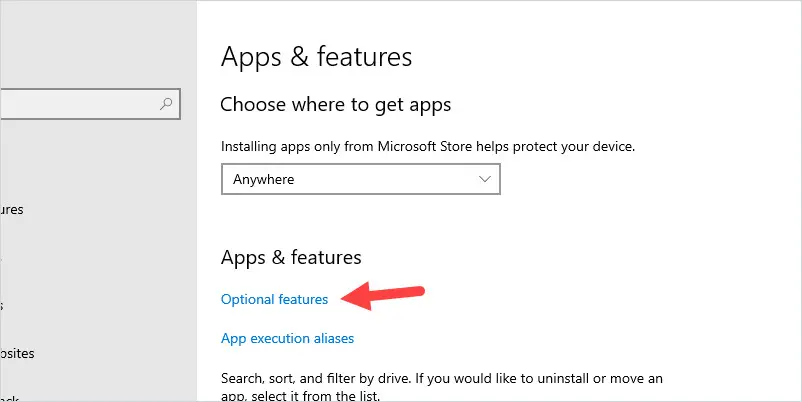
2. Click on Add a feature.
3. Type rsat and then select the RSAT tools you want to install.
In this example, I’ll install the Active Directory, DHCP, and DNS tools.

4. Click install to start the installation.
When the installation is complete the status will say installed.

You can now navigate to the start -> Windows Administrative Tools to open one of the RSAT tools.
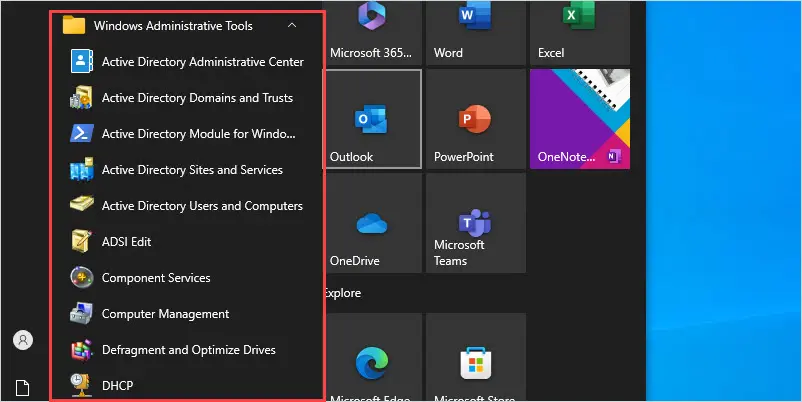
Install RSAT on Windows 11
On Windows 11 go to settings and then Apps.
Click on Optional Features.

Click on the View Features button.

Type in rsat and select the tools you want to install.
In this example, I’ll select the Active Directory Domain Services tool.
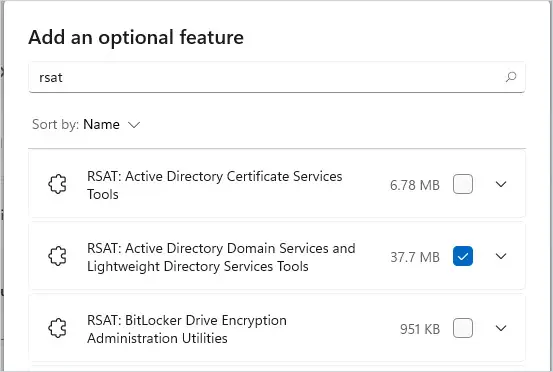
Click “Next”.
Click “Install”.
When the installation is complete, you can access the tools by going to all apps -> Windows Tools.

Install RSAT on Windows Server
These steps work for Server 2016, 2019, and 2022.
Open the Server Manager and click on Add roles and features

Click Next.
Select “Role-based or featured-based installation” and click next
Select your server and click next.
For server roles click Next. (We are not adding any server roles).
For features scroll down to Remote Server Administration Tools).
Select the tools you want to install and click next.
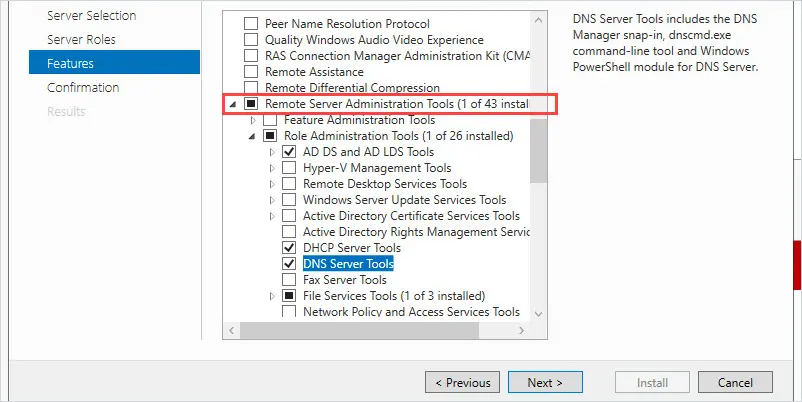
Confirm the selections and click install.
When the installation is complete the tool can be accessed from start -> Windows Administration Tools
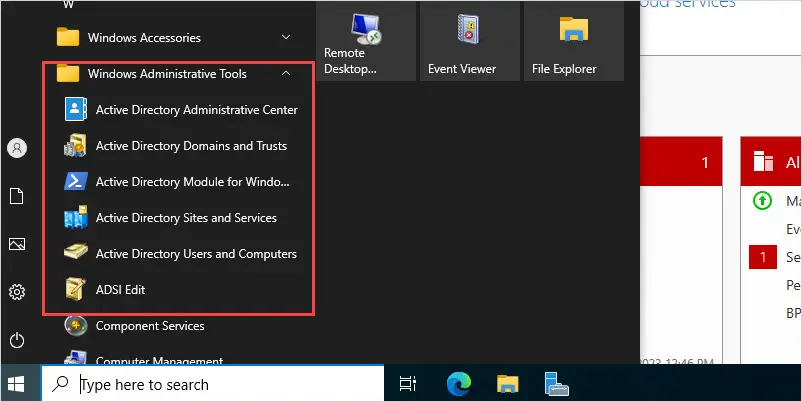
Using PowerShell to Install RSAT
You can install individual RSAT tools or all of them using Powershell.
Example 1.Install all RSAT tools run the below command.
Get-WindowsCapability -Name RSAT* -Online | Add-WindowsCapability –Online
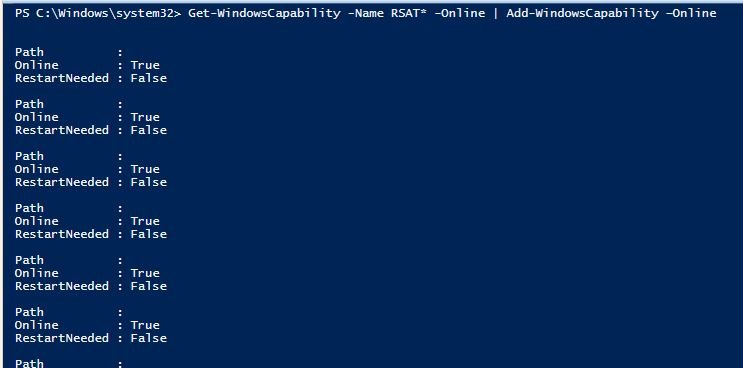
Example 2. Install Specific RSAT Tool using PowerShell
To install individual tools you will use the Add-WindowsCapability -Online -Name command followed by the PowerShell tool name.
In this example, I’ll install the Active Directory Domain Servers tools using the command below.
Add-WindowsCapability -Online -Name Rsat.ActiveDirectory.DS-LDS.Tools~~~~0.0.1.0Use the names below to install other RSAT tools via PowerShell.
Active Directory Domain Servers and Lightweight Directory Services Tools: Rsat.ActiveDirectory.DS-LDS.Tools~~~~0.0.1.0
BitLock Drive Encryption Administration Tools: Rsat.BitLocker.Recovery.Tools~~~~0.0.1.0
Active Directory Certificate Services:
Rsat.CertificateServices.Tools~~~~0.0.1.0
DHCP Server Tools:
Rsat.DHCP.Tools~~~~0.0.1.0
DNS Server Tools:
Rsat.Dns.Tools~~~~0.0.1.0
Failover Clustering Tools:
Rsat.FailoverCluster.Management.Tools~~~~0.0.1.0
File Services Tools:
Rsat.FileServices.Tools~~~~0.0.1.0
Group Policy Management Tools:
Rsat.GroupPolicy.Management.Tools~~~~0.0.1.0
IP Address Management (IPAM) Client:
Rsat.IPAM.Client.Tools~~~~0.0.1.0
Data Center Bridging LLDP Tools:
Rsat.LLDP.Tools~~~~0.0.1.0
Network Controller Management Tools:
Rsat.NetworkController.Tools~~~~0.0.1.0
Network Load Balancing Tools:
Rsat.NetworkLoadBalancing.Tools~~~~0.0.1.0
Remote Access Management Tools:
Rsat.RemoteAccess.Management.Tools~~~~0.0.1.0
Remote Desktop Services Tools:
Rsat.RemoteDesktop.Services.Tools~~~~0.0.1.0
Server Manager:
Rsat.ServerManager.Tools~~~~0.0.1.0
Shielded VM Tools:
Rsat.Shielded.VM.Tools~~~~0.0.1.0
Storage Migration Service Management Tools:
Rsat.StorageMigrationService.Management.Tools~~~~0.0.1.0
Storage Replica Module for Windows PowerShell:
Rsat.StorageReplica.Tools~~~~0.0.1.0
System Insights Module for Windows PowerShell:
Rsat.SystemInsights.Management.Tools~~~~0.0.1.0
Volume Activation Tools:
Rsat.VolumeActivation.Tools~~~~0.0.1.0
Windows Server Update Services Tools:
Rsat.WSUS.Tools~~~~0.0.1.0
You can use PowerShell to view which RSAT tools are installed with the following command.
Get-WindowsCapability -Name RSAT* -Online | Select-Object -Property DisplayName, State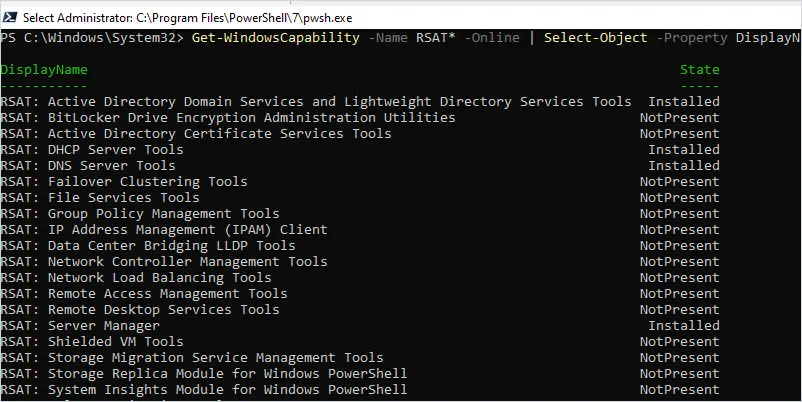
Simplify Active Directory Management with AD Pro Toolkit
Managing Active Directory with the RSAT tools has its limitations, such as bulk editing and no reporting. Fortunately, the AD Pro Toolkit simplifies bulk management and reporting with its comprehensive set of Active Directory Tools. The toolkit also includes a built in scheduler to automate tasks and reporting.
AD Pro Toolkit Key Features:
- Bulk import users
- Bulk update users
- Cleanup inactive user and computer accounts
- User management tools
- Quickly unlock and reset user passwords
- Manage user group membership
- Onboard and offboard users
- 200+ built-in Active Directory reports
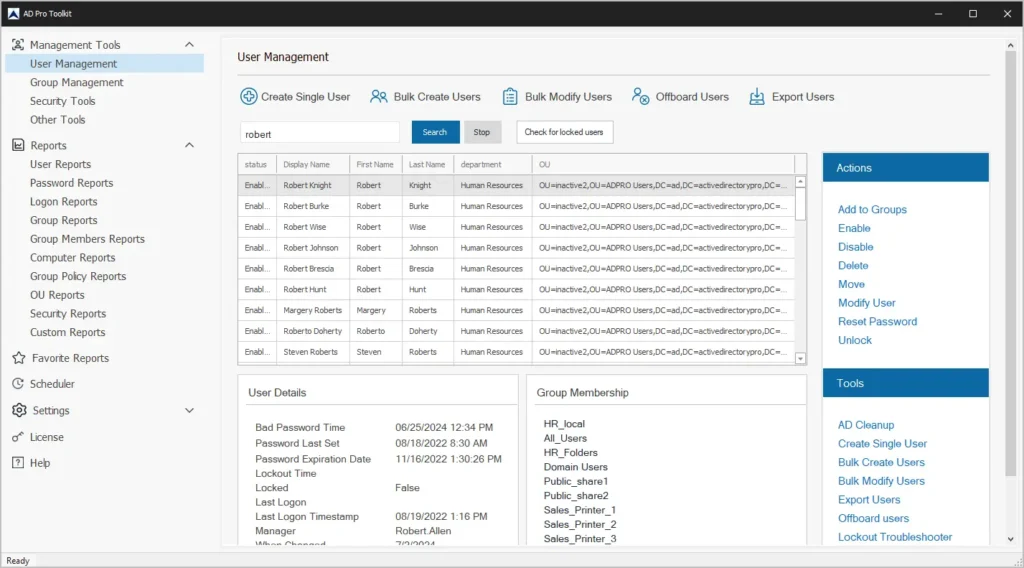
In addition to the management tools, the toolkit includes over 200 built in Active Directory Reports. Create security reports, compliance reports, customize reports and send email reports.
Try the AD Pro Toolkit for 14 days and experience the All-in-One Toolkit that makes managing Active Directory fast, easy and efficient. Download AD Pro Toolkit now and try it for yourself. Easy to Install and get started in minutes
I hope you found this article helpful. If you have questions leave a comment below.

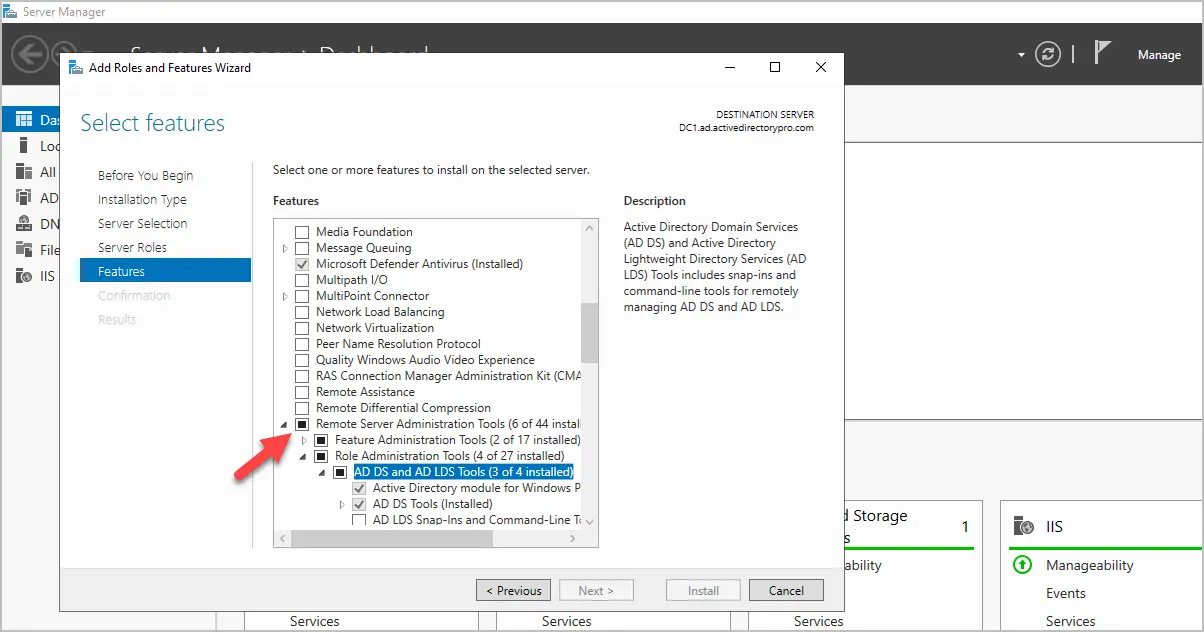
In Windows11 you will find what you need in System –> Optional Features –> View Features.. The above Apps –> Optional Features is no longer a Valid location.
For anyone else that is looking for Optional Features with Apps and Features, honestly just type in the Windows search bar “Optional Features” and it will immediately pop up
Hero
Yes, it is. Option Feature is still available in Win 11. Just search for it.
The path to install in the windows interface is now:
Settings >> System (NOT Apps) >> Optional features……
Just FYI.
I have Windows 11 Home version 22H2.
I do not find RSAT tools under Optional Features.
I try to install Active Directory from PowerShell without success.
Looks like it gets stuck during PowerShell installation.
Operation
Running
[00000000
PS C:\windows\system32> Get-WindowsCapability -Name “Rsat.ActiveDirectory.DS-LDS.Tools*” -online | Select-Object -Property Name, State
Name State
—- —–
Rsat.ActiveDirectory.DS-LDS.Tools~~~~0.0.1.0 Staged
PS C:\windows\system32> Get-WindowsCapability -Online -Name “Rsat.ActiveDirectory.DS-LDS.Tools*” | Add-WindowsCapability -Online
I am getting the same Error if anyone know please let me know how to solve this problem
If you have Windows Home, it is not supported.
From Microsoft “**Remote Server Administration Tools for Windows 10 can be installed ONLY on computers that are running the full release of Windows 10 Professional, Windows 10 Enterprise, or Windows 10 Education.*”
See the system requirements section.
https://www.microsoft.com/en-us/download/details.aspx?id=45520
RSAT is not supported on Windows Home. Only Pro, Enterprise and Education.
So, is there any alternative for users who have Windows 11 Home Single Language, Version 23H2? to work on AD DS
Microsoft says “you can’t install RSAT on computers that are running Home or Standard editions of Windows”
Source
https://learn.microsoft.com/en-us/troubleshoot/windows-server/system-management-components/remote-server-administration-tools
what do we do after we install all of this. My goal is to be able to use active directory users and computers.
Start -> Windows Administrative Tools -> Active Directory Users and Computers
run as administrator!
PS C:\Windows\System32> Get-WindowsCapability -Name RSAT* -Online | Add-WindowsCapability –Online
Add-WindowsCapability : Cannot validate argument on parameter ‘Name’. The argument is null or empty. Provide an arg
the command again.
At line:1 char:45
+ … WindowsCapability -Name RSAT* -Online | Add-WindowsCapability –Online
+ ~~~~~~~~~~~~~~~~~~~~~~~~~~~~~
+ CategoryInfo : InvalidData: (Microsoft.Dism….apabilityObject:PSObject) [Add-WindowsCapability], Pa
+ FullyQualifiedErrorId : ParameterArgumentValidationError,Microsoft.Dism.Commands.AddWindowsCapabilityCommand
Ada installer RSAT win10 ver 20H2?
This is really helpful!!
This was terrific and extremely helpful. Thank you very much!